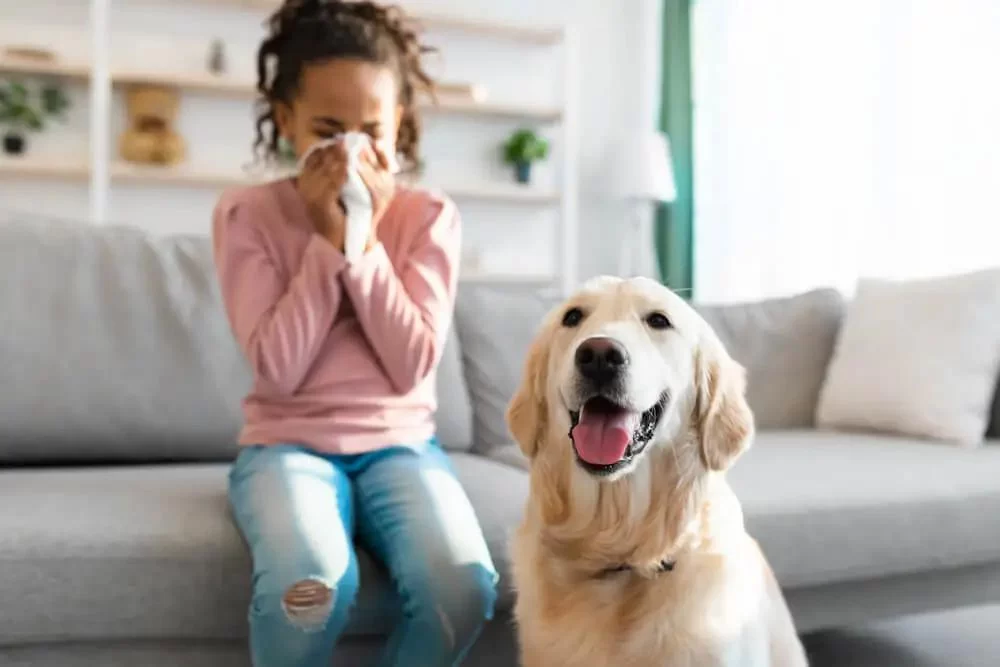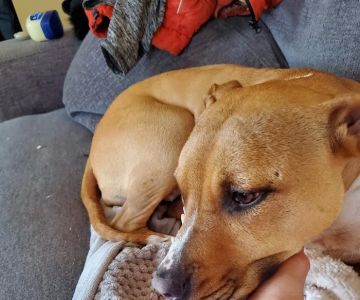How to Treat Dog Allergies: Tips for Managing and Alleviating Symptoms
As a dog owner, there are few things more heartbreaking than seeing your furry companion suffering from allergies. I remember when my dog, Max, first started showing signs of discomfort. His itching seemed constant, and he was scratching so much that it left me worried about his well-being. After a trip to the vet, I discovered that Max had allergies—a common issue for many dogs. With the right approach, managing his symptoms became much easier. In this article, I’ll share the insights and steps I’ve learned for treating dog allergies and providing relief for your four-legged friend.
1. Understanding Dog Allergies
Dog allergies can be triggered by a variety of substances. In Max’s case, his allergies were caused by environmental factors like pollen and dust mites, which is common for many dogs. However, other allergens can also affect dogs, including certain foods, flea bites, and even shampoos or household cleaners. Identifying the source of your dog’s allergies is the first step in treating them effectively.
Common types of dog allergies include:
- Environmental Allergies: These are caused by pollen, mold, dust mites, or other allergens found in the environment.
- Food Allergies: Some dogs have allergic reactions to specific ingredients in their food, such as chicken, beef, dairy, or grains.
- Flea Allergies: Flea bites can trigger severe allergic reactions in some dogs, leading to itching and hair loss.
- Contact Allergies: Certain materials, like certain fabrics or chemicals in cleaning products, can cause skin irritation.
When Max started showing signs of allergies, I knew that figuring out the cause was the most important step. Once I understood what was causing his symptoms, I was able to take steps to alleviate his discomfort.
2. Common Symptoms of Dog Allergies
Recognizing the symptoms of allergies in dogs is crucial for treatment. Some symptoms are subtle, while others are more obvious. When Max first started scratching excessively, I thought it was just dry skin or a minor issue, but when the symptoms persisted, I realized it was something more serious.
Common signs of allergies in dogs include:
- Excessive Scratching: If your dog is constantly scratching or licking their paws, it could be a sign of allergies.
- Red, Inflamed Skin: Allergic reactions often cause the skin to become red, irritated, or inflamed.
- Hot Spots: Dogs with allergies may develop hot spots, which are areas of moist, inflamed skin that can become infected.
- Runny Eyes or Nose: Watery eyes or a runny nose can also be signs of allergies.
- Ear Infections: Dogs with allergies are prone to ear infections, which cause itching, odor, and redness.
- Vomiting or Diarrhea: If your dog has a food allergy, they may experience gastrointestinal issues.
It was when Max started developing red, inflamed patches of skin that I suspected allergies. After consulting with my vet, it became clear that Max was allergic to environmental factors, which helped me focus on specific treatment options.
3. How to Treat Dog Allergies
Once I identified that Max had allergies, I worked with my vet to develop a treatment plan. There are several approaches to managing and alleviating dog allergies, depending on the cause and severity of the symptoms. Below, I’ll share some of the most effective treatments that have worked for Max and other dogs.
3.1 Medications
For Max, the vet recommended antihistamines to help control his allergic reactions. These medications work by blocking histamines, which are chemicals released during an allergic reaction that cause itching, swelling, and other symptoms. Some common antihistamines for dogs include Benadryl and Zyrtec, although I always made sure to consult the vet about the correct dosage for Max’s size and condition.
If antihistamines don’t provide enough relief, corticosteroids may be prescribed to reduce inflammation and provide stronger relief for severe itching. However, these should be used sparingly, as long-term use of steroids can have side effects.
3.2 Allergy Shots (Immunotherapy)
In some cases, allergy shots, also known as immunotherapy, may be recommended by your vet. This treatment involves regular injections of small amounts of the allergens your dog is allergic to, helping to desensitize their immune system over time. It’s a long-term solution that can reduce the severity of allergic reactions and improve your dog’s quality of life. For Max, we started discussing allergy shots, but it was determined that his symptoms could be managed with other methods.
3.3 Flea Control
If your dog’s allergies are triggered by fleas, flea control becomes a top priority. Even if you don’t see fleas on your dog, it’s possible for flea bites to cause allergic reactions. Max had developed a mild flea allergy, so I started using a monthly flea preventive treatment to ensure he stayed flea-free. Regular flea baths and spot treatments can also help control flea populations and prevent allergic reactions.
3.4 Dietary Changes
Food allergies can be trickier to identify, but in some cases, your dog’s allergic reactions may be related to the ingredients in their food. I’ve had friends who successfully treated their dog’s food allergies by switching to a hypoallergenic diet. These diets contain novel protein sources (such as duck or venison) and limited ingredients to reduce the chance of allergic reactions. If your dog shows symptoms like vomiting, diarrhea, or itchy skin after eating, it might be worth discussing food allergies with your vet and trying an elimination diet to identify triggers.
3.5 Bathing and Skin Care
Regular baths with a hypoallergenic dog shampoo can help relieve itching and remove allergens from your dog’s skin. When Max had flare-ups, I used a soothing oatmeal-based shampoo that helped calm his irritated skin. After the bath, I applied a dog-safe moisturizing spray to prevent dryness and irritation. Bathing not only helps with allergies, but it also helps remove dirt, dust, and pollen that may be causing irritation.
3.6 Environmental Control
Since Max’s allergies were triggered by environmental factors, I made a few changes to our living environment to reduce his exposure to allergens. I vacuumed more frequently, washed his bedding weekly, and used air purifiers to help filter out dust and pollen. During high pollen seasons, I kept the windows closed and avoided walking Max in areas with heavy pollen concentrations. Simple changes like these helped reduce Max’s exposure to allergens and improved his comfort significantly.
4. Keeping Your Dog Comfortable
While managing the symptoms of allergies, it’s important to keep your dog comfortable. I found that Max appreciated a cool, quiet spot to relax when his allergies were bothering him. I also made sure to monitor him closely for signs of infection, which can occur when dogs scratch excessively. If I noticed any signs of infection, such as redness, swelling, or discharge, I immediately contacted the vet for treatment.
Max’s allergies became much more manageable with a combination of treatments and environmental adjustments. By staying proactive and monitoring his condition, I was able to help him live comfortably despite his allergies. With the right treatment plan, you can keep your dog healthy and happy, even when allergies are a challenge.












